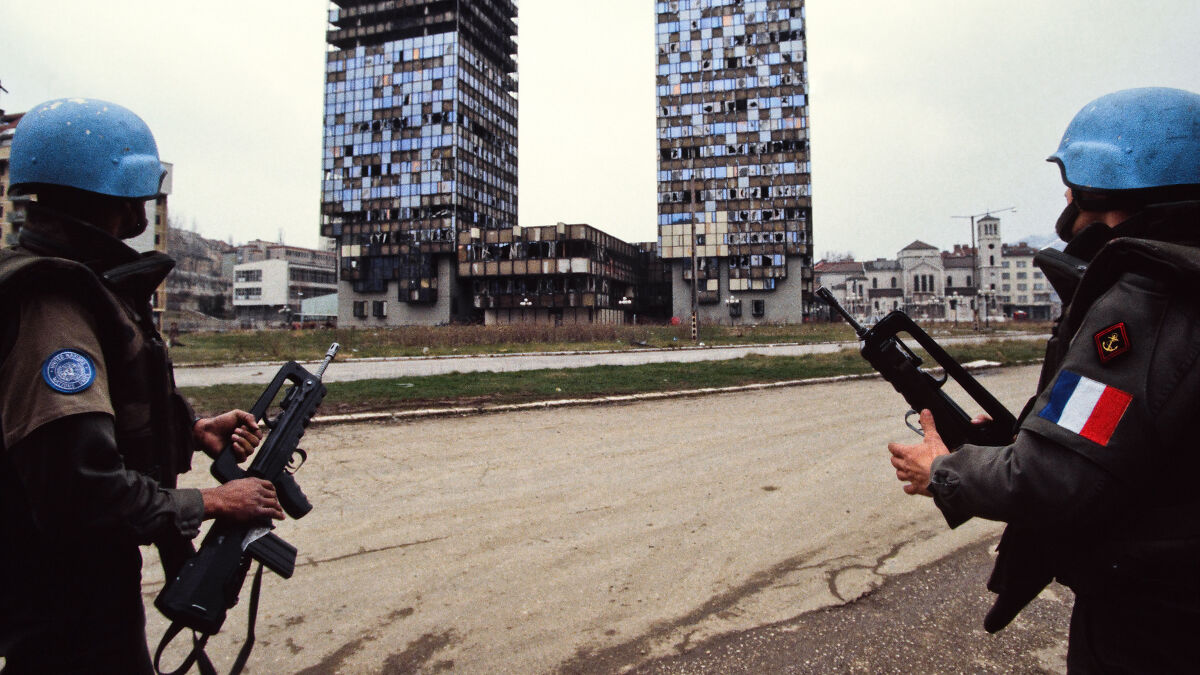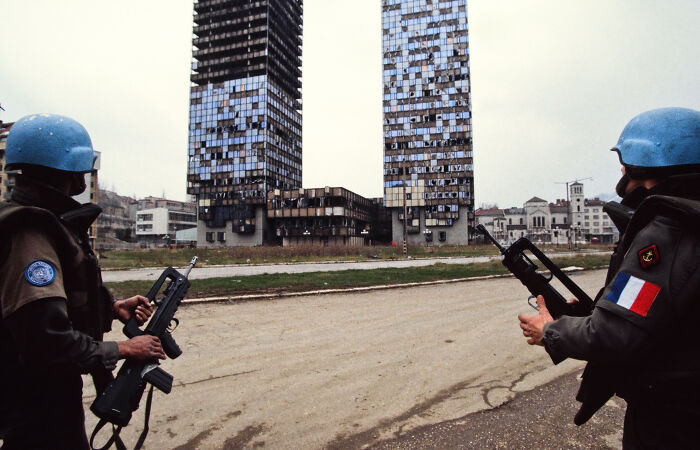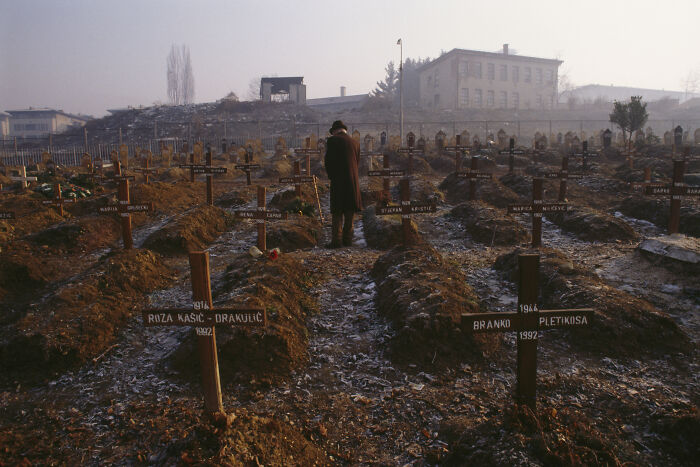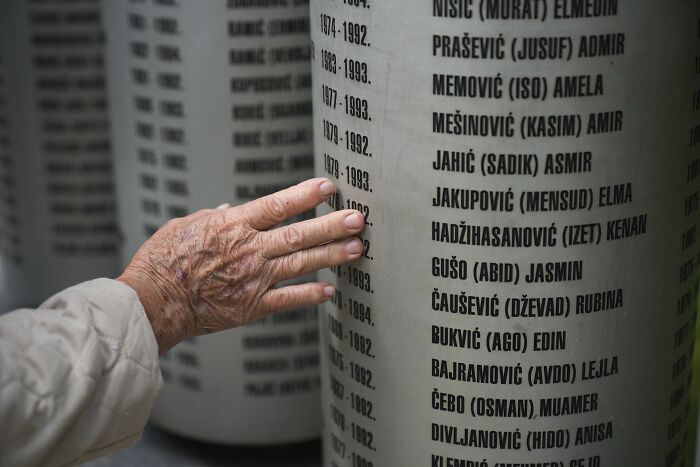
Tourists Allegedly Paid $100,000 To Hunt People On “Human Safari” Trips, Sparking Investigation
Prosecutors in Milan, Italy, have opened an investigation into tourists who allegedly paid up to $100,000 to shoot innocent civilians during the siege of Sarajevo in the early 1990s.
More than 10,000 people were killed by shelling and sniper fire during the siege, which lasted four years from 1992 until 1996 during the Bosnian War.
- Italian prosecutors investigate tourists allegedly paying up to $100,000 to shoot civilians during Sarajevo siege in the 1990s.
- Tourists, linked to right-wing circles, reportedly paid Serbian forces to hunt unarmed civilians and children from hills above Sarajevo.
- Investigation launched after a complaint backed by journalist Ezio Gavazzeni and evidence from the documentary Sarajevo Safari.
Residents faced constant shelling and sniper fire, particularly on streets such as Ulica Zmaja od Bosne and Meša Selimović Boulevard, which were dubbed “sniper alley.”
Tourists allegedly paid to shoot unarmed civilians during the siege of Sarajevo
Image credits: Andia/Universal Images Group via Getty Images
Italian tourists linked to right-wing circles are now being investigated over allegations they took part in a “human safari” to shoot unarmed civilians, and paid extra to shoot children.
As reported by Italian newspaper La Repubblica, prosecutors believe so-called “war tourists” left Trieste on airline Aviogenex to travel to the Serbian capital Belgrade on Fridays.
Once there, the wealthy gun enthusiasts were reportedly taken to the hills above Sarajevo after paying Serbian forces huge sums to fire at defenseless civilians.
The investigation in Milan is focusing on alleged homicide aggravated by cruelty and abject motives.
It comes off the back of a 17-page complaint filed by writer and journalist Ezio Gavazzeni, supported by former judge Guido Salvini and lawyer Nicola Brigida.
Image credits: Antoine GYORI/Sygma via Getty Images
Gavazzeni told La Repubblica he began investigating the allegations after Miran Zupanic’s 2022 documentary Sarajevo Safari, which looked in depth at the claims.
“A former Bosnian intelligence officer, serving in those years, told me about Italians being brought into the hills to shoot down civilians,” Gavazzeni said.
“The Bosnian intelligence services decided not to deal with it; the three ethnic groups are still together with scotch tape, and the complaint there has been archived. But here, in Milan, we can bring the truth to light.”
He told the publication that he expects at least 10 of the estimated 100 war tourists to be tracked down from the evidence handed over to prosecutors.
One of them is reportedly a Milan businessman who owns a private cosmetic surgery clinic.
About 11,500 people died during the siege, including 1,600 children
Image credits: Antoine GYORI/Sygma via Getty Images
“We’re talking about wealthy people, with a reputation, entrepreneurs, who during the siege of Sarajevo paid to be able to kill defenseless civilians,” Gavazzeni added.
“They left Trieste for the manhunt. And then they returned and continued their normal lives, respectable in everyone’s eyes.
“People with a passion for weapons, to vent, who prefer to go to bed with a rifle, with money at their disposal and the right contacts of facilitators between Italy and Serbia.”
The Bosnian consul in Milan, Dag Dumrukcic, told La Repubblica: “We are eager to uncover the truth about such a cruel matter and settle accounts with the past.
“I am aware of some information that I will contribute to the investigation.”
Image credits: Samir Jordamovic/Anadolu via Getty Images
It is understood prosecutors will request documents from the International Criminal Tribunal for former Yugoslavia (ICTY), which was set up in 1993 to prosecute serious crimes committed during the wars that followed the breakup of Yugoslavia.
Former Bosnian Serb political leader Radovan Karadžić was convicted at the court in The Hague in 2016 on charges of genocide, crimes against humanity, and war crimes.
He was initially sentenced to 40 years’ imprisonment, but in 2019 his sentence was increased to life.
Former Bosnian Serb Army commander Stanislav Galić was convicted in 2003 by the ICTY of crimes against humanity and war crimes for his role in a campaign of shelling and sniping against civilians during the siege of Sarajevo.
In 2006, the Appeals Chamber increased his sentence from 20 years to life imprisonment in recognition of the deliberate terrorization of the civilian population.
Karadžić was imprisoned in the U.K., while Galić was sentenced to prison in Germany.
The siege of Sarajevo lasted from April 5, 1992, to February 29, 1996, ending after the Dayton accords brought the Bosnian War to a close.
Estimates put the death toll from the 1,425-day siege at about 11,500 people, including roughly 1,600 children, with tens of thousands more wounded.










15
0